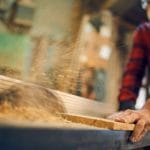Pickleball, a sport that combines elements of tennis, badminton, and table tennis, has seen an exponential growth in popularity. But its rapid rise has brought with it several challenges, including noise pollution, overcrowding, concerns about child safety, and potential impacts on property values. Learn about the problems with pickleball and what to do about them.
Noise Pollution
The most significant concern associated with pickleball is the noise it produces. The continuous “pop” sound created when the hard plastic ball hits the rigid plastic paddle can be disruptive, especially in residential areas. The noise levels can even reach over 70 decibels in some residential locations near the court. Plus, unlike its more genteel ancestor, tennis, with its occasional grunts (OK, and a few arguments, if we’re remembering John McEnroe), pickleball can be quite rowdy: players love to trash talk, shout, clap, and generally raise a ruckus.
Crowds on the Courts
One of the things you may not know about pickleball is that an existing tennis court, designed for a maximum of four players in a doubles match, can accommodate up to 16 pickleball players. The annoying sound of four pickleball players is four times more aggravating when there are 16 players. Plus, more players means the irritating pop-pop-pop noise of paddles hitting balls becomes even more erratic—there is no regular rhythm to the sound of a pickleball game.
Tennis Court Turf Wars and Playground Peril
Parents have complained that the crowds pickleball attracts endanger children at nearby playgrounds and disrupt the fun playgrounds are supposed to provide for kids. Tennis players resent that pickleball has commandeered many of their courts, while pickleball players complain they don’t have enough places to play.
Home Values
Homeowners who moved to a quiet suburban area only to wake up one morning with a pickleball court across the street are concerned that the noisy reputation of the game will negatively affect their home values. After getting little relief from local government, some homeowners have given up and moved. Others won’t be so lucky. Those who have received little or no help from local governments have resorted to litigation alleging violations of noise and zoning ordinances.
Possible Solutions
Short of litigation, several strategies can be implemented to address the noise, space, and safety issues that pickleball raises. These include:
Noise Mitigation: The use of quieter paddles and balls specifically designed to reduce the “pop” sound can help mitigate noise pollution. Additionally, installing noise curtains around the courts can dampen the noise. In fact, the pickleball noise problem has spawned at least one business venture, Pickleball Sound Mitigation, which advises homeowners associations, clubs, and municipalities on possible remedies for the annoying, high-pitched, near constant pop-pop-pop of pickleball.
Crowd Control: Implementing restrictions on hours of play and access can ensure everyone gets a fair chance to enjoy the game without feeling cramped.
Court Location: Placing courts farther away from homes can reduce noise disturbances and crowd-related issues in residential areas.
Separation of Courts and Playgrounds: Allocating separate courts for pickleball and tennis, and setting aside playgrounds as no-pickleball zones can manage overcrowding and ensure a safer and more enjoyable experience for all players.
While the problems with pickleball and what to do about them require some creative thinking and compromise, proactive planning and targeted measures can ensure the sport continues to bring joy to its players without disrupting the peace and tranquility of residential neighborhoods.






